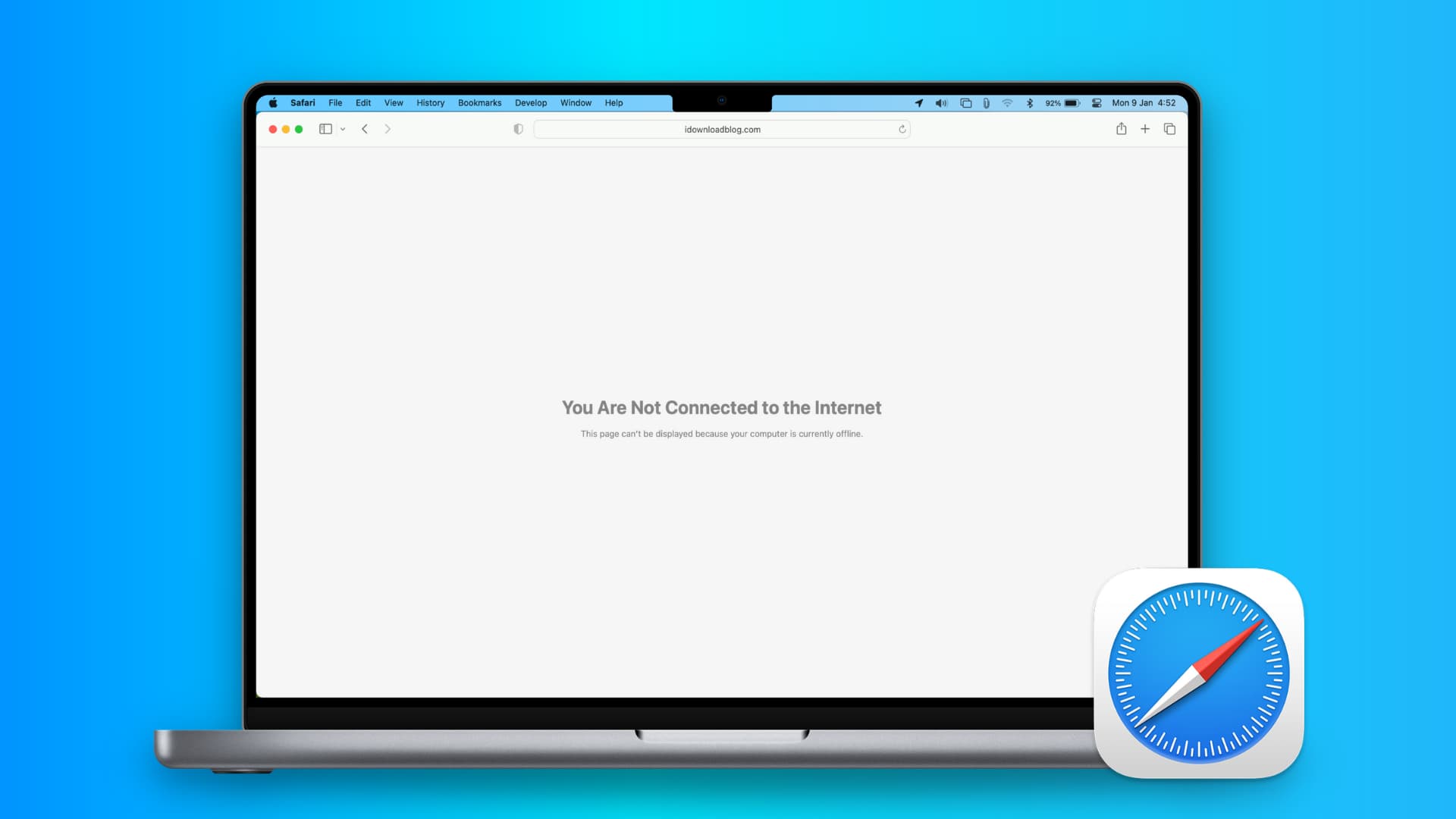Introduction
Browser extensions, also known as add-ons or plugins, are powerful tools that can enhance your browsing experience by adding new features and functionality to your favorite web browser. From ad blockers and password managers to productivity-boosting tools and entertainment add-ons, there's a vast array of extensions available for popular browsers like Google Chrome, Mozilla Firefox, Microsoft Edge, and Safari.
While browser extensions can be incredibly useful, it's essential to ensure that your browser is not weighed down by unnecessary or potentially harmful extensions. Some extensions may compromise your online security and privacy, slow down your browser performance, or even lead to unwanted pop-up ads and redirects.
In this guide, we'll walk you through the process of checking your browser extensions to ensure that you have full control over the add-ons installed in your browser. By following these steps, you can maintain a clean and secure browsing environment, optimize your browser's performance, and safeguard your online activities from potential threats.
Let's dive into the step-by-step process of checking your browser extensions to take charge of your browsing experience.
Step 1: Open the browser's settings
To begin the process of checking your browser extensions, the first step is to access your browser's settings. The method for accessing settings may vary slightly depending on the browser you are using, but the general steps are quite similar across different platforms.
Google Chrome
In Google Chrome, you can access the browser's settings by clicking on the three-dot menu icon located in the top-right corner of the browser window. Once you click on the icon, a dropdown menu will appear, and you can select "Settings" from the list. Alternatively, you can type "chrome://settings/" in the address bar and press Enter to directly access the settings page.
Mozilla Firefox
For Mozilla Firefox users, the settings can be accessed by clicking on the three-line menu icon in the top-right corner and selecting "Options" from the dropdown menu. Another way to access settings is by typing "about:preferences" in the address bar and hitting Enter.
Microsoft Edge
In Microsoft Edge, you can open the browser's settings by clicking on the three-dot menu icon in the top-right corner and selecting "Settings" from the menu. Alternatively, you can type "edge://settings/" in the address bar and press Enter to access the settings directly.
Safari
Safari users can access the browser's settings by clicking on "Safari" in the top menu bar and selecting "Preferences" from the dropdown menu. This will open the Preferences window, where you can manage various settings, including browser extensions.
Once you have successfully accessed the settings of your preferred browser, you are ready to proceed to the next step in the process of checking your browser extensions.
By following these simple steps to open the browser's settings, you have taken the initial and crucial step towards managing your browser extensions effectively. Now, let's move on to the next step to continue the process of reviewing and managing your browser extensions.
Step 2: Navigate to the extensions or add-ons section
After accessing your browser's settings, the next step is to navigate to the extensions or add-ons section where you can review and manage the installed browser extensions. This section provides you with an overview of all the extensions currently active in your browser, allowing you to assess their impact on your browsing experience and take necessary actions to maintain a secure and efficient environment.
Google Chrome
In Google Chrome, once you are in the settings menu, you can find the "Extensions" tab on the left-hand side. Clicking on this tab will direct you to the extensions management page, where you can view a list of all installed extensions, their details, and options to modify their settings or remove them from the browser.
Mozilla Firefox
For Mozilla Firefox users, the "Add-ons" section can be accessed from the settings menu. Upon clicking on "Add-ons," you will be taken to the Add-ons Manager, where you can explore the installed extensions, themes, and plugins. This section provides comprehensive information about each extension and enables you to adjust their settings or remove them as needed.
Microsoft Edge
In Microsoft Edge, the "Extensions" section can be found in the settings menu. Clicking on "Extensions" will lead you to the extensions management page, where you can view and manage the installed extensions. This section empowers you to customize the behavior of each extension and uninstall any unwanted or suspicious ones.
Safari
Safari users can access the "Extensions" tab by navigating to the Preferences window from the browser's settings. Within the Preferences window, you can select the "Extensions" tab to explore the list of installed extensions. This section allows you to review the details of each extension and make informed decisions about their retention or removal.
By navigating to the extensions or add-ons section of your browser, you have gained access to a centralized platform where you can oversee the impact of extensions on your browsing activities. This pivotal step sets the stage for the subsequent actions you can take to ensure a streamlined and secure browsing experience. Now, let's proceed to the next step to continue the process of reviewing and managing your browser extensions effectively.
Step 3: Review the list of installed extensions
Once you have navigated to the extensions or add-ons section of your browser, it's time to carefully review the list of installed extensions. This step is crucial as it allows you to gain insights into the purpose, functionality, and potential impact of each extension on your browsing experience.
As you peruse through the list of installed extensions, take note of the following key aspects:
-
Extension Details: Pay attention to the details provided for each extension, including its name, description, and the permissions it requires. Understanding the purpose and intended functionality of an extension is essential in evaluating its relevance to your browsing needs.
-
User Ratings and Reviews: If available, consider exploring user ratings and reviews for each extension. User feedback can offer valuable insights into the performance, reliability, and potential issues associated with an extension. This information can aid in making informed decisions about retaining or removing specific extensions.
-
Resource Consumption: Assess the resource consumption of each extension, particularly its impact on browser performance and system resources. Some extensions may consume significant memory or processing power, leading to sluggish browsing experiences. Identifying resource-intensive extensions is crucial for optimizing your browser's performance.
-
Security and Privacy Implications: Evaluate the security and privacy implications of each extension. Be mindful of the permissions requested by an extension and assess whether they align with your comfort level regarding data access and usage. Additionally, consider the reputation of the extension developer and any known security concerns associated with the extension.
-
Frequency of Use: Reflect on the frequency of use for each extension. If certain extensions are rarely utilized or no longer serve a practical purpose, it may be prudent to consider removing them to declutter your browser and streamline its functionality.
By meticulously reviewing the list of installed extensions, you are actively engaging in the process of maintaining a well-curated selection of add-ons that align with your browsing preferences and security considerations. This proactive approach empowers you to make informed decisions about the retention, modification, or removal of extensions, thereby enhancing the overall quality of your browsing environment.
With a comprehensive understanding of the installed extensions, you are now equipped to proceed to the next step, where you can take decisive actions to manage your browser extensions effectively.
Step 4: Disable or remove any suspicious or unwanted extensions
After thoroughly reviewing the list of installed extensions and gaining valuable insights into their impact on your browsing experience, it's time to take decisive actions to ensure the integrity and efficiency of your browser. This involves identifying and addressing any suspicious or unwanted extensions that may pose security risks, compromise privacy, or contribute to a cluttered and suboptimal browsing environment.
Disabling Extensions
For extensions that raise concerns or are no longer actively utilized, disabling them can be a prudent initial step. Disabling an extension temporarily deactivates its functionality without removing it entirely from the browser. This approach allows you to assess the impact of the disabled extension on your browsing activities before making a final decision.
To disable an extension, navigate to the extensions or add-ons section of your browser and locate the target extension in the list. Look for an option to disable or deactivate the extension, which is typically accompanied by a toggle switch or a similar control mechanism. By disabling the extension, you can observe any immediate improvements in browser performance or changes in your browsing experience.
Removing Unwanted Extensions
In the case of unwanted or potentially harmful extensions, removing them from your browser is essential to mitigate associated risks and streamline your browsing environment. When removing an extension, all associated files and settings are permanently deleted from the browser, ensuring that the extension no longer exerts any influence on your browsing activities.
To remove an extension, navigate to the extensions management page and locate the target extension in the list. Look for an option to remove or uninstall the extension, often represented by a dedicated button or link associated with each extension. Upon initiating the removal process, confirm your action if prompted, and the extension will be promptly uninstalled from your browser.
By disabling or removing suspicious or unwanted extensions, you are actively fortifying the security and efficiency of your browsing experience. This proactive approach empowers you to maintain a curated selection of extensions that align with your preferences, optimize browser performance, and uphold stringent security and privacy standards.
With the necessary actions taken to manage your browser extensions effectively, you have demonstrated a commitment to fostering a secure, streamlined, and personalized browsing environment. By regularly reviewing and addressing your browser extensions, you can ensure that your online activities are conducted within a controlled and optimized digital ecosystem.
Conclusion
In conclusion, the process of checking and managing browser extensions is a fundamental aspect of maintaining a secure, efficient, and personalized browsing environment. By following the step-by-step approach outlined in this guide, you have gained valuable insights into the proactive measures that can be taken to oversee and optimize the extensions installed in your preferred web browser.
Through the meticulous review of installed extensions, you have honed your ability to assess their purpose, impact on browser performance, and implications for security and privacy. This informed evaluation empowers you to make well-informed decisions regarding the retention, modification, or removal of extensions, ensuring that your browsing experience remains tailored to your preferences and aligned with stringent security standards.
By actively engaging in the process of disabling or removing suspicious or unwanted extensions, you have taken proactive steps to fortify the integrity of your browser. This approach not only mitigates potential security risks but also contributes to a streamlined and efficient browsing environment, free from unnecessary clutter and resource-intensive add-ons.
It is important to recognize that the management of browser extensions is an ongoing endeavor, and regular reviews of installed extensions are essential to adapt to evolving browsing needs and security considerations. By incorporating the practice of periodic extension audits into your browsing routine, you can uphold a dynamic and optimized digital ecosystem that reflects your preferences while prioritizing security and performance.
Ultimately, the ability to check and manage browser extensions empowers you to curate a personalized browsing experience that aligns with your preferences, enhances productivity, and safeguards your online activities. By leveraging the insights and actions outlined in this guide, you are well-equipped to navigate the diverse landscape of browser extensions with confidence and discernment, ensuring that your digital interactions unfold within a secure and tailored framework.
In embracing the proactive management of browser extensions, you have demonstrated a commitment to optimizing your online experiences while prioritizing security and efficiency. By integrating these practices into your browsing habits, you are poised to navigate the digital realm with heightened control, resilience, and a steadfast focus on a secure and personalized browsing experience.

























